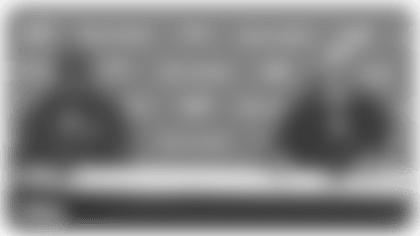Dick Harris was unwilling to give anyone the shirt off his back — not this shirt.
The Chargers announced they were moving to Los Angeles on Jan. 12 and Harris scurried into the bedroom of his El Segundo home. He scrounged around the closet, looking for the perfect way to mark the occasion.
Harris, who turned 80 in July, had been a Charger defensive back—a Los Angeles Chargers defensive back—in 1960. He had a memento from that season, a vintage Los Angeles Charger T-shirt.
He put it on and headed to his local watering hole.
"It was sort of a joke," Harris said.
Yet, no one in the bar was laughing.
"A lot of guys there wanted to buy it," said Harris, who spent more than 40 years as a teacher and coach after leaving football. "They wanted to know where I had it made and if they could get one. I said, 'You can't get this one. It's an original.' "
So is Harris.
The Chargers spent one season in Los Angeles before moving to San Diego. The team won the American Football League's West Division and lost to the Houston Oilers in the title game.
Harris was called "Chucko" by one assistant coach because the amount of zinc oxide Harris slathered on his face gave him a clown-like appearance. Appropriate, considering the circus-like atmosphere around the new league.
Harris saw opportunity in the AFL even if he was a long shot to make it. He had been a star of San Pedro High School, but played little in college.
Still, Harris survived three rounds of tryouts with the Chargers and landed a starting job. He was selected to play in the AFL all-star game twice in six seasons, and helped the Chargers win the league title in 1963.
It was a different time — after one all-star season Harris said he received a $500 raise. It was also a different game, as Harris said he punched New York Jets receiver Don Maynard during the team's first exhibition game, "just to let him know I was there."
But he was playing professional football in Los Angeles. What more could a San Pedro kid ask?
"That was something I dreamed about as a kid," Harris said.
So, there was no chance he was ever going to sell that shirt.
———
Harris is more than just a name from the Chargers' past.
He was their first unique personality.
"He was always up to something," Paul Lowe said. "He and Paul Maguire and Bob Zeman were the first ones to get their clothes on so they could go have a beer."
Zeman remembers a game in Houston, where the Oilers were inside the 10-yard line. They lined up in a formation the Chargers had prepared to face, but at the last second, Harris called for a triple switch.
The Oilers scored.
"We get to the sideline and Faulkner called down from the press box to ask what happened," Zeman said. "Dick told him, 'Don't worry, we're still ahead.' He could always come up with something cute to say."
Prior to the 1963 season, Coach Sid Gillman moved the team's training camp to Rough Acres. It was a patch of barren country 60 miles east of San Diego near the community of Boulevard where the rattlesnakes outnumbered the population.
Players would head to a local gas station, the only place in the area that had beer.
"We were driving back one night and there was this snake on the road," Harris said. "I got out and began fighting it with a stick. It was huge, 12 rattles. Paul was screaming and hollering while I was dueling with it. Finally, I whacked it."
Harris, linebacker/punter Paul Maguire and quarterback Tobin Rote put the snake on the car hood and drove back to camp. Gillman was livid, Harris said, until Rote — the starting quarterback — claimed he'd killed it.
Maguire, though, chuckled at hearing that version.
"Yeah, we put it on the car all right, but we ran over the snake," he said. "He didn't fight it. But if that's his story, that's fine. That's Dick.
"He felt things should be fun. He'd lather up in that zinc oxide and look like the mummy. He went down to Agua Caliente Race Track in Tijuana one time. His wife didn't even know where he was. He picked five winners in 10 races and threw a whole bunch of money in the air when he came back. He thought he was an expert. He was just lucky."
But Maguire said, "On the field, there wasn't any messing around."
Harris intercepted 29 passes in six seasons, the second most in Chargers history. He shares the record for most interceptions in a single game (three) and most career interceptions returned for a touchdown (five).
"He is one of the great cover guys the Chargers have ever had," said Zeman, who spent four of his seven seasons in the AFL with the Chargers.
Even if Harris, at 5-feet-11 and 180 pounds, didn't look like he belonged.
"We were in New York, and when we came out of the hotel, some kids were asking for autographs," said Maguire, who played four seasons with the Chargers and seven with the Buffalo Bills. "Dick wasn't that big so he kept telling them, 'I'm a player, I'm a player.' "
That was clear on the field.
"I don't think he ever got the recognition he deserved," Maguire said. "I don't think he ever sought it."
— — —
All Harris wanted to do is play football. That chase took him on a long and winding road.
It was clear he had talent. During a touch football game as a high school student, Harris was matched against Washington Redskins' fullback Dale Atkeson.
"They threw it to him in the end zone and I tried to punch the ball out," Harris said. "I punched him in the chin. Dale got a little upset and came after me. He was 180-190 pounds and I was this skinny, 140-pound high school kid. Fortunately, he sort of laughed and let it go."
Harris wasn't about to change.
"I never saw him back down from anyone," Maguire said.
Harris meandered after high school. He went to Los Angeles Harbor Community College and attempted to get into USC. The Trojans wanted Harris, especially after one visit where he held his own in a race with Olympic sprinter Jim Lea and Los Angeles Rams tight end Leon Clarke, but he failed to get into school.
Harris went to Washington State, but suffered a broken finger. A friend at McNeese State lured him to Louisiana in 1957. It was a different world.
"On the bus ride, we were stopped by police as soon as we crossed into Louisiana," Harris said. "They wanted to make sure all the African Americans were in the back."
Harris played one season at McNeese State, where he averaged 10.4 yards on punt returns to lead the Gulf State Conference. A feud with the coach cost him his football scholarship.
He ran track two seasons, but was back home playing semi-pro football when the Chargers called.
The team cast a wide net in picking up players before the 1960 season.
Zeman, who played at Wisconsin, was recruited at a post-Rose Bowl party held at the home of Chargers owner Barron Hilton. Former Oregon State running back Paul Lowe, who had been cut by the San Francisco 49ers in 1959, was found working in the mail room at the Carte Blanche Credit Card Corporation, which was owned by Hilton.
Harris, though, was the longest of shots. He was invited to the first of three tryout camps on the recommendation of Phil Cantwell, who had coached against Harris in high school.
"I was in the first group and none of us were supposed to make it," Harris said. "Every day, they'd knock on doors and tell someone, 'bring your playbook, the coach wants to see you.' They never knocked on my door."
He was one of six players invited back for the second tryout group, which was made up of college players. Of the six, only Harris and another player were brought back for the third camp, which was ex-NFL players and Chargers' draft picks.
Each day, Harris proved he belonged.
"The second preseason game, we go up to Oakland and Dick had an interception," Maguire said. "The next day, he rolls up to practice in a Cadillac. Now I know my first contract was $8,000 and I was drafted. He wasn't. But he told me, 'I'm not worried.' "
Harris was the only player from the first tryout to make the team.
No one was surprised.
"He always stuck his nose in there and took care of business," Lowe said.
The 1960 Chargers set the bar for the franchise. They won eight of their last nine games to finish 10-4 and won the AFL West Division title.
The coaching staff was headed by Gillman and included Al Davis, Chuck Noll and Jack Faulkner.
"Those guys are legends," Harris said. "And I was playing against guys who I worshipped growing up, like George Blanda."
Still, he was hardly star-struck.
Harris led the team with five interceptions.
"People didn't realize how fast he was," Zeman said. "He would sucker guys into thinking he was beat, then he'd sneak in and pick the ball off."
Harris had to keep proving himself.
"Sid Gilliam was always bringing in guys to challenge Dick and then would cut them," Maguire said. "Every time Dick would tell him, 'you can't cut me, I'm the best cornerback you got.' "
Harris helped the Chargers win five division titles in six seasons. In 1963 — after a rough camp at Rough Acres — the team won the AFL championship. Harris had eight interceptions in 1963.
"We were awesome," Harris said.
After the 1966 season, Harris left the Chargers and signed with the Raiders. He stayed through part of training camp, but woke up one morning and decided, "I was done with football." He packed and left.
He walked away with a lifetime of memories, a championship ring and one T-shirt.
"I was surprised I still had it," Harris said, laughing. "The last time I wore it was 1960."





